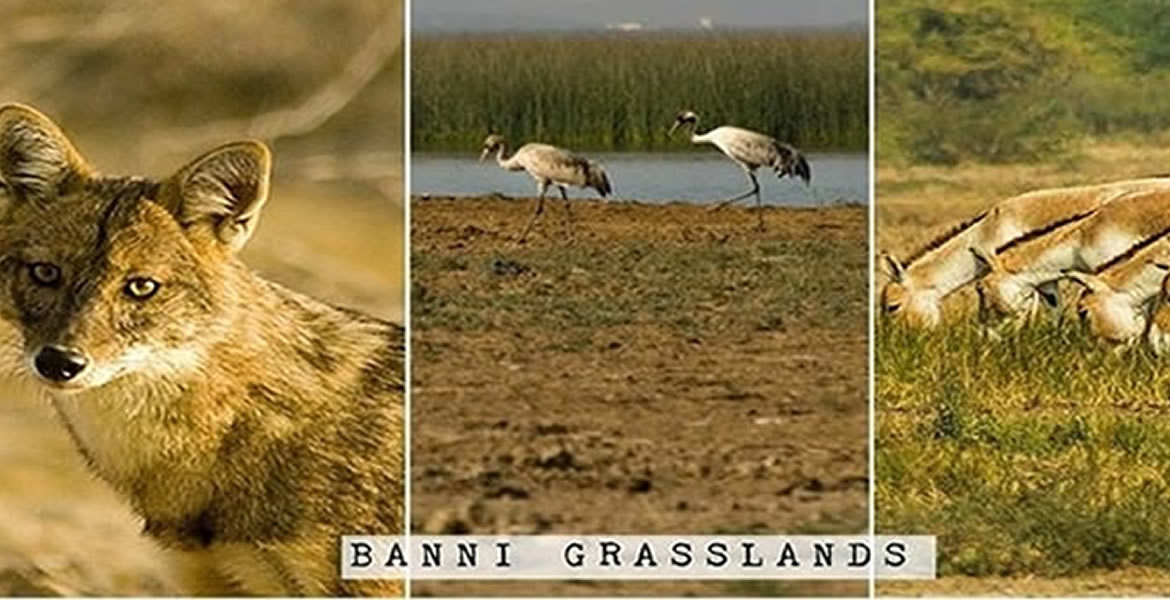
Banni Biodiversity
Banni covers an area of 3847 sq km. This area is absolutely flat; the altitude only ranges between 3 metres to 5 metres above sea level. More than two thirds of the area of Banni is high in salinity,During the fifties, Banni was predominantly grassland, with a very low density of trees and bushes. It was considered one of the largest and finest Asian grasslands. At that time there were more than 40 species of grasses, but nowadays there are just around 15 species, due to the planting of a non indigenous thorny shrub (prosopisjuliflora) by the Forest Department in the Sixties to control the soil salinity. This thorny shrub known locally as gandobaawal, literally crazy thorn-bush, grew very fast, destroying several native species and eroding huge tracks of the grassland. Locals have learned to extract gum and to make charcoal from this plant as a source of livelihood.
However, Banni continues to support very rich and diverse faunal elements. While the seasonal wetlands have a very large number of migratory waterfowls, the grasslands are home to many other wild animal species including the chinkara, wolf, houbara bustard and common cranes.
A study in 1997 reported a total of 273 bird species in Banni, including 107 species of migratory birds
